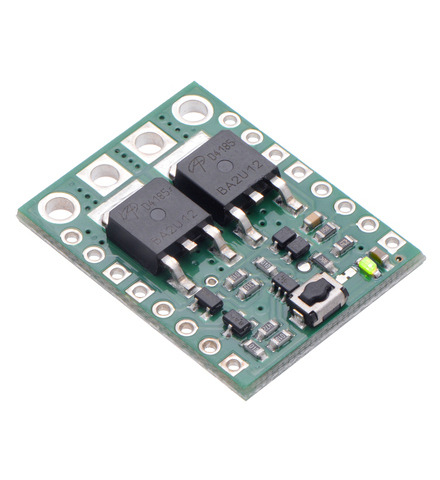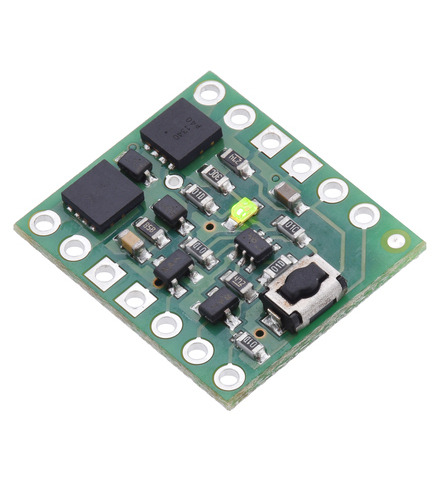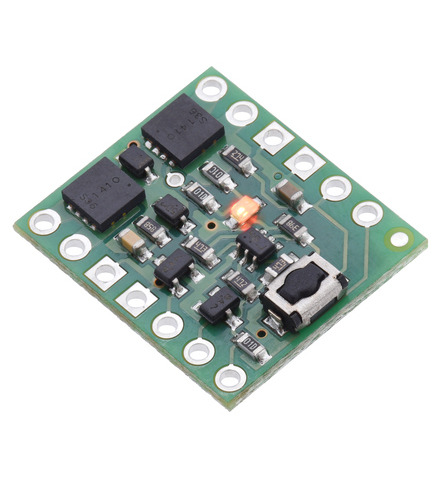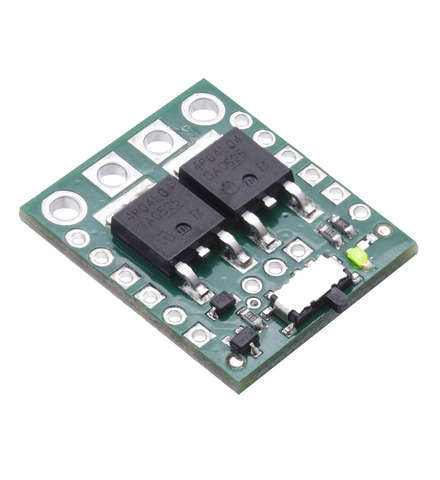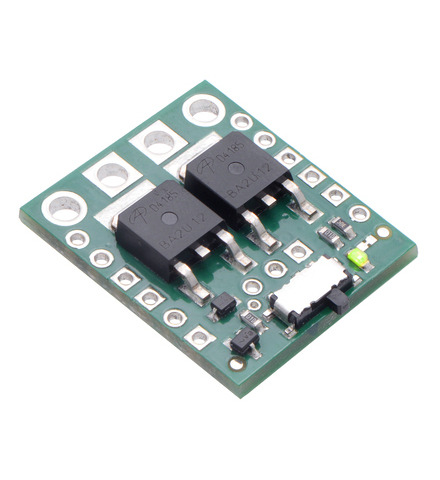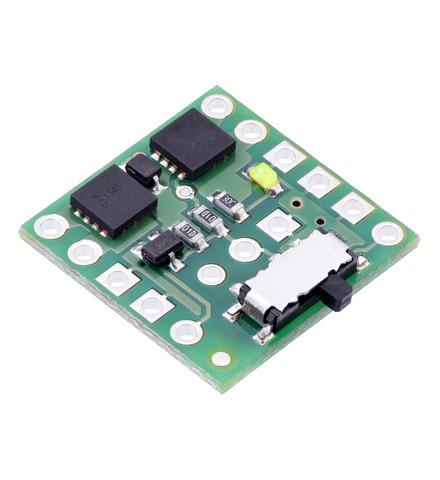Electronics » Electronics Prototyping » Switches, Buttons, and Relays »
Pololu Power Switches
 Compare all products in this category
Compare all products in this category
Products in category “Pololu Power Switches”
| Pololu item #: 2813 | |
| Brand: Pololu | supply outlook |
| Status: Active and Preferred | |

|
|
The Pololu Pushbutton Power Switches are sophisticated power control alternatives to bulky mechanical switches. The main function is pushbutton-based latching power control, where one push turns on power and another push turns it off. Additional control inputs allow advanced applications such as automatic shutdown by the device being powered. This HP version operates from 4.5 V to 40 V and can deliver continuous currents up to around 16 A.
| Pololu item #: 2812 | |
| Brand: Pololu | supply outlook |
| Status: Active and Preferred | |

|
|
The Pololu Pushbutton Power Switches are sophisticated power control alternatives to bulky mechanical switches. The main function is pushbutton-based latching power control, where one push turns on power and another push turns it off. Additional control inputs allow advanced applications such as automatic shutdown by the device being powered. This MP version operates from 4.5 V to 40 V and can deliver continuous currents up to around 8 A.
| Pololu item #: 2809 | |
| Brand: Pololu | supply outlook |
| Status: Active and Preferred | |

|
|
The Pololu Pushbutton Power Switches are sophisticated power control alternatives to bulky mechanical switches. The main function is pushbutton-based latching power control, where one push turns on power and another push turns it off. Additional control inputs allow advanced applications such as automatic shutdown by the device being powered. This standard-voltage (SV) version operates from 4.5 V to 40 V and can deliver continuous currents up to around 4 A.
| Pololu item #: 2808 | |
| Brand: Pololu | supply outlook |
| Status: Active and Preferred | |

|
|
The Pololu Pushbutton Power Switches are sophisticated power control alternatives to bulky mechanical switches. The main function is pushbutton-based latching power control, where one push turns on power and another push turns it off. Additional control inputs allow advanced applications such as automatic shutdown by the device being powered. This low-voltage (LV) version operates from 2.2 V to 20 V and can deliver continuous currents up to around 6 A.
| Pololu item #: 2815 | |
| Brand: Pololu | supply outlook |
| Status: Active and Preferred | |

|
|
This breadboard-compatible module is an alternative to bulky power switches. It uses a small integrated slide switch to control a high-side power MOSFET that can deliver continuous currents up to around 16 A at 4.5 V to 40 V. The board features reverse-voltage protection and also makes it easy to control the MOSFET with an external switch or the digital output of a microcontroller.
| Pololu item #: 2814 | |
| Brand: Pololu | supply outlook |
| Status: Active and Preferred | |

|
|
This breadboard-compatible module is an alternative to bulky power switches. It uses a small integrated slide switch to control a high-side power MOSFET that can deliver continuous currents up to around 8 A at 4.5 V to 40 V. The board features reverse-voltage protection and also makes it easy to control the MOSFET with an external switch or the digital output of a microcontroller.
| Pololu item #: 2811 | |
| Brand: Pololu | supply outlook |
| Status: Active and Preferred | |

|
|
This breadboard-compatible module is an alternative to bulky power switches. It uses a small integrated slide switch to control a high-side power MOSFET that can deliver continuous currents up to around 4 A at 4.5 V to 40 V. The board features reverse-voltage protection and also makes it easy to control the MOSFET with an external switch or the digital output of a microcontroller.
| Pololu item #: 2810 | |
| Brand: Pololu | supply outlook |
| Status: Active and Preferred | |

|
|
This breadboard-compatible module is an alternative to bulky power switches. It uses a small integrated slide switch to control a high-side power MOSFET that can deliver continuous currents up to around 6 A at 2 V to 20 V. The board features reverse-voltage protection and also makes it easy to control the MOSFET with an external switch or the digital output of a microcontroller.



